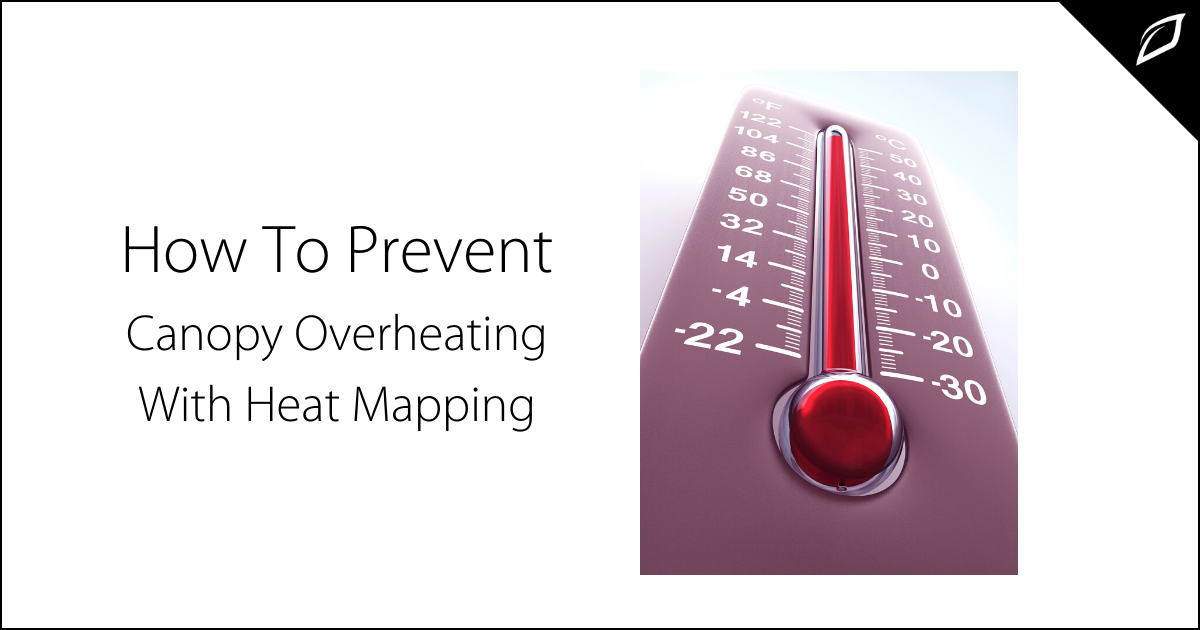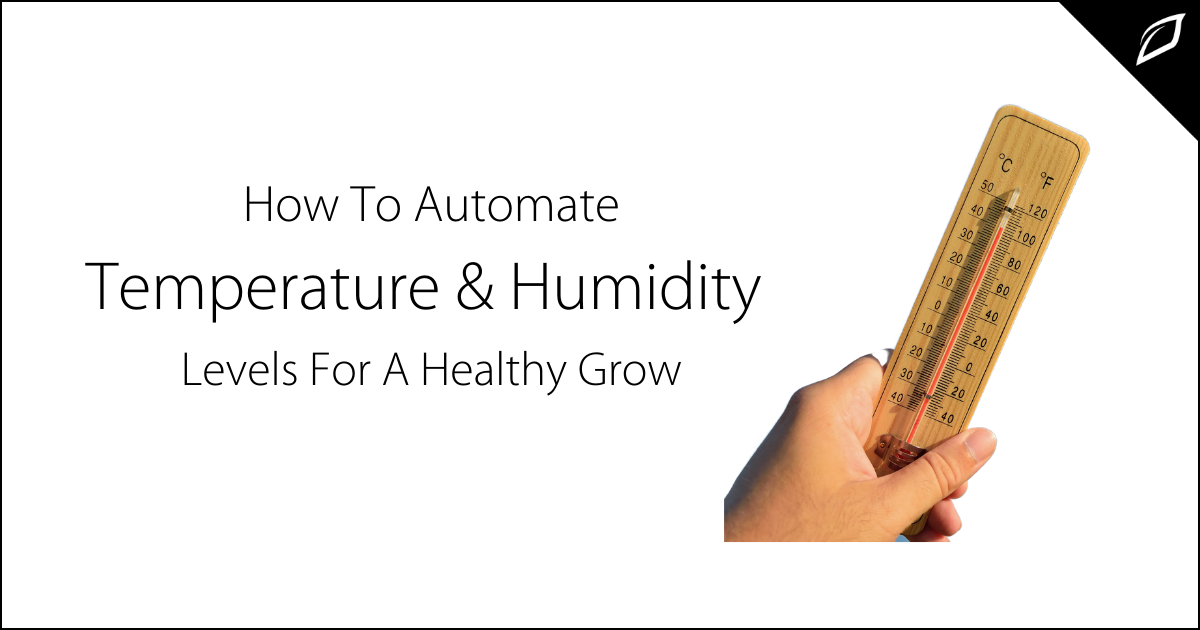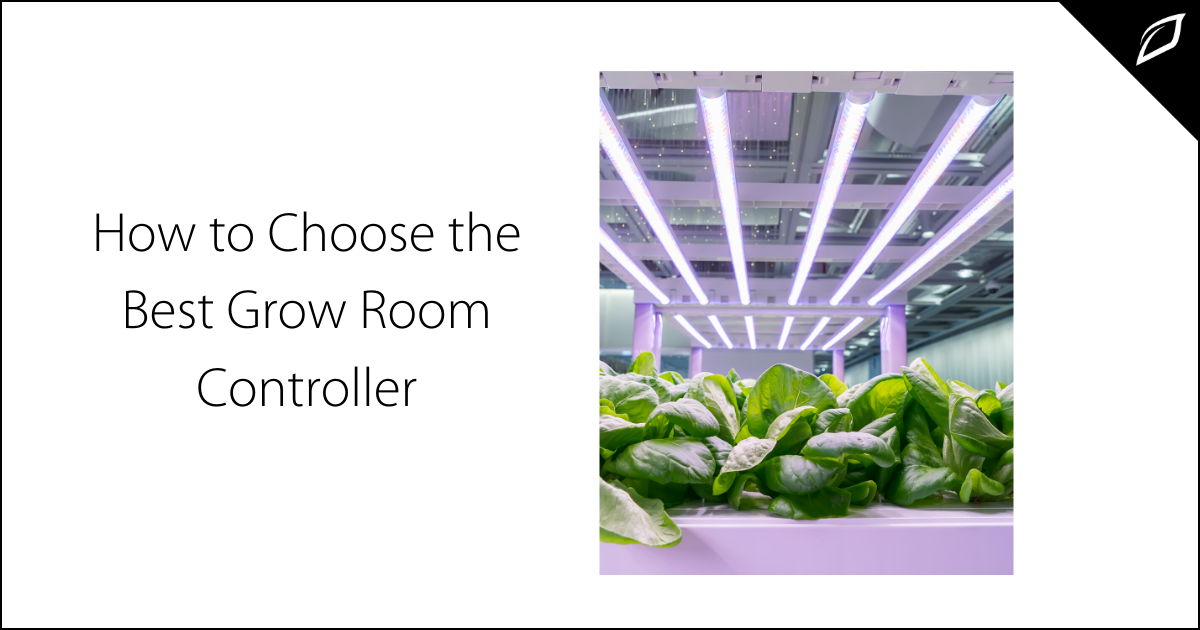How To Automate Temperature and Humidity Levels for a Healthy Grow
Properly managed temperature and humidity are key factors in helping plants to thrive in a greenhouse setting. In the absence of proper controls,...


Most growers are aware that different types of plants have varying preferred climates in which they grow. Some plants grow happily in one environment throughout their entire life cycle; others grow best in one environment during the vegetative stage and another during the flowering stage.
As with all living things, plants thrive in some climates and struggle in others. The consequences of that are apparent where icy winter temperatures or sweltering desert heat render the landscape barren. Even in the relative comfort of an indoor grow space, small swings in temperature can have significant impacts on growth, affecting both the quality and yield of your crops.
In nature, plants get a chance to cool off when the sun goes down, and in an indoor environment, the lights-off period provides the same opportunity. The difficulty is that just as with day-time temperatures, plants have ideal "lights out" temperatures. The risk of cooling down too much is genuine, especially in places where the outdoor nighttime temperature drops significantly. In addition to the complications that overly cold temperatures present, colder air also increases the risk of condensation forming on the plants, which could become a haven for damaging molds and fungi. This makes it of paramount importance that growers are always aware of the temperature inside their growing environment.
The majority of lights used in indoor growing give off a tremendous amount of heat. As a result, the risk of overheating a crop's canopy exists, even in rooms otherwise set to the optimal temperature. An overheated canopy leads to significant problems, including absorbing moisture from the plants and reducing their ability to perform photosynthesis, which could annihilate a crop. In the past, canopy overheating could only be corrected by increasing the distance between lights and plants or by employing LED lighting, which gives off very little heat. But ag-tech is changing that by creating new tools to provide insights into the micro-climate within your grow room.
As with all indoor climate control, the first step to getting things properly dialed-in is monitoring. Traditional thermostats, while fine for setting a comfortable home or office temperature, have significant limitations that make them generally unsuitable for indoor growing. The primary drawback is that most thermostat systems only measure part of the room. Dialing in a perfect climate for a grow operation is pointless if that climate isn't across the entire environment. Likewise, a simple thermostat only takes into account ambient temperatures – it can't pinpoint specific trouble areas, like a partially overheated canopy, for example.
The solution is heat mapping. From a growing perspective, the benefit of heat mapping is an unparalleled level of insight into the temperature and other climate variables not just in the room as a whole, but on a plant-by-plant basis (depending on the number of sensors employed). For instance, if lousy airflow in a growing environment is causing overheating in one portion of the canopy, a thermostat won't provide that information, but a heat-map will. That kind of intelligence is invaluable when it comes to maximizing crop health.
One of the primary goals of growing indoors is maximizing control over the many factors that go into producing the best crop possible. Of those factors, the climate is both one of the most important and the most controllable. However, it's impossible to control something that can't be accurately measured, and measurement has long been the weak point in climate control.
Heat mapping employs an array of thermal imaging sensors placed across an environment to accurately measure the ambient air temperature and all of the surfaces, including the canopy. The result is a clear picture of a room's hot and cold areas and the gradients between them – either in the form of a color visual image or as a set of raw data points. By providing this invaluable information to growers, they are able to make adjustments proactively to avoid crop losses.

Properly managed temperature and humidity are key factors in helping plants to thrive in a greenhouse setting. In the absence of proper controls,...

The technology media has been enamored with “smart” solutions lately. Smart cities generate data to better manage pollution, crime, and traffic....

Expanding an indoor farm from a single small room to multiple grow rooms can create—for lack of a better expression—some growing pains. Entrepreneurs...